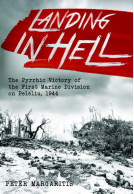The Canadian Theater, 1814 (Paperback)
Imprint: Casemate Publishers
Series: Casemate Illustrated
Pages: 96
Illustrations: 80+ photographs, illustrations and maps
ISBN: 9781636245447
Published: 15th May 2025
Series: Casemate Illustrated
Pages: 96
Illustrations: 80+ photographs, illustrations and maps
ISBN: 9781636245447
Published: 15th May 2025
You'll be £15.96 closer to your next £10.00 credit when you purchase The Canadian Theater, 1814. What's this?
+£4.99 UK Delivery or free UK delivery if order is over £40
(click here for international delivery rates)
Order within the next 5 hours, 45 minutes to get your order processed the next working day!
Need a currency converter? Check XE.com for live rates
(click here for international delivery rates)
Order within the next 5 hours, 45 minutes to get your order processed the next working day!
Need a currency converter? Check XE.com for live rates
The War of 1812 reached a fever pitch along the American border with Canada during the fighting season of 1814. After eighteen months of war, victory over Great Britain remained an elusive goal for the United States;American attempts to conquer Canada had failed, and Britain had not budged on its assertion that it had the right to impress U.S. sailors of British birth. In the South, fighting with the Red Stick Creeks smoldered, while on the Atlantic seaboard the Royal Navy had tightened its blockade and begun raiding villages and plantations on Chesapeake Bay with impunity. While the United States improved the quality of its armed forces and leadership, flawed strategies and resource shortages hindered its campaign to seize Upper and Lower Canada. Meanwhile, with war in Europe finally over, the British were working to transfer numbers of experienced soldiers and sailors to join the struggle against the United States. Following the battles and campaigns of the year—including the clashes at Chippewa and Lundy’s Lane, the siege of Fort Erie, and at Plattsburgh—the United States controlled only a small portion of Upper Canada across from Detroit. Great Britain occupied eastern Maine, Fort Niagara, Fort Mackinac, and the upper Mississippi Valley. The stunning and unlikely victory at Plattsburgh maintained Lake Champlain as a U.S. possession. Meanwhile, Britain was ready for peace and agreed that all occupied territories would be returned to their original owners at the conclusion of the war.
Fully illustrated, this narrative discusses the operations of this pivotal year in detail, explores the fortunes of leaders like Jacob Brown, Gordon Drummond, and Winfield Scott, examines the evolving tactics and resilience of American militias and regular troops, and analyses the strategic miscalculations and hard-fought victories that defined this turning point in the war.
Customers who bought this title also bought...
Other titles in the series...
Other titles in Casemate Publishers...






















